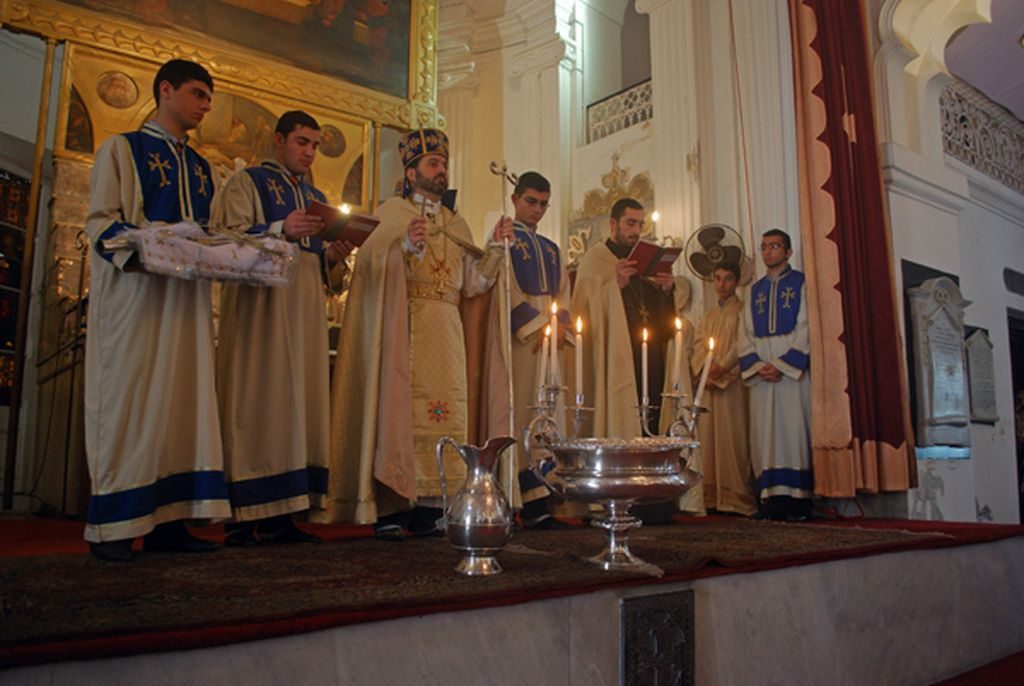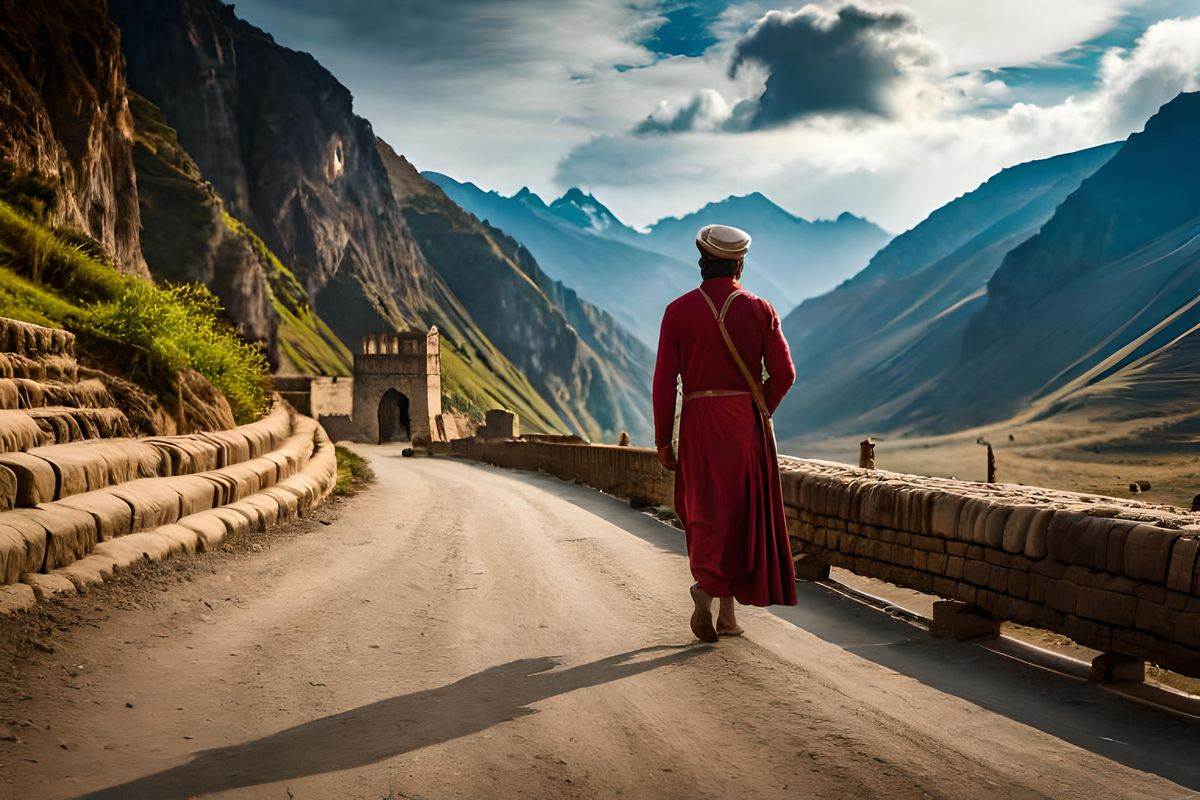India is a very diverse country, a melting pot of thousands of ethnicities, languages, and cultures. If some are very well known, others are almost a mystery.
Among communities living in India, one can find Armenians. Originating from the mountains of the Caucasus, linking Asia and Europe, Armenians have been quietly and discreetly living in India for centuries.
As mentioned above, their presence in India was noticed quite early. They were merchants, as well as preachers as part of various Christian missions.
The earliest trace of an Armenian is of a road builder (guide) in India in the 12th-13th centuries. But the first ‘real and active’ testimony of Armenians’ presence in India date back only to the 16th century.
These are primarily Armenian inscriptions on tombstones from the territory of Hindustan. In the Christian cemeteries of India, it is the Armenian epitaphs that turn out to be the oldest.
This trend can be seen in the Christian cemeteries of the Indian port city of Surat and the capital of the Mughal state of Agra, where after the Armenians they began to bury all immigrants from Europe.
Old Presence and Tombstones
The oldest Armenian epitaph in India dates back to 1579 and comes from the Surat cemetery. Translation of the oldest Armenian epitaph from Surat according to Mesrop Set:
In this grave lies the body of a respected lady, whose name was Marinas, the wife of the priest Voskan. She was the crown for her husband, as is said in the parables of Solomon.
She presented herself before the Lord, this is the cause of grief and sorrow for her faithful husband, in the year 1028 of our Armenian era (1579), on the fifteenth of November at the first hour of Friday, at the age of 53 years. Seeing this tomb, pray to the Lord for his mercy.
Epitaphs of Rich Armenians from Iran
The next Armenian epitaph is located in the so-called Roman Catholic cemetery of Agra. It belongs to the oldest burial in this necropolis. And dates back to 1611.
The pilgrim Martiros, the son of Pirbashi from Julfa, rests in this tomb. He died in the city of Agra and distributed his property to the glory of God for his soul in 1060 of the Armenian era.
For this major Armenian merchant, a special mausoleum-chapel was erected, the oldest in this cemetery.
Later, together with him, the Armenian Bishop Zakur from Tabriz (1615) and several other priests were buried in the mausoleum.
Further, there are several translations of epitaphs from the tombstones of the cemeteries of Agra and Surat. They give a good idea of the geography of the travels of Armenian merchants.
The main Armenian trading centers in the 16th-18th centuries were the cities of Julfa (now in Azerbaijan) and New Julfa (the Armenian quarter of the city of Isfahan in Iran). Here is what the translations say:
“The holy cross is in memory of Aga Murad, the son of Leon from Bitlis,” “Died in 1060 of the Armenian era (1611) This holy cross is in memory of Kamalbek, the son of Khoja Sultan from Julfa. He died in Agra in 1065 of the Armenian era (1616),” “This is the grave of Khoja Murat, who came to Christ in 1093 of the Armenian era (1644 AD).”
The cemetery in the port of Surat was older than the necropolis in the Mughal capital of Agra. In the Armenian cemetery of Surat, one mausoleum-chapel has been preserved, in which there is the only Armenian inscription of 1695.
“This is the grave of Qalandar, the son of Fanus Qalandar from Julfa, he passed away on Saturday, March 6, 1695.”
The father of the buried Khoja Fanus Kalandar from New Julfa (a quarter in Iranian Isfahan) was the largest Armenian businessman, possibly the head of the Armenian community in India. On June 22, 1688, in London, he signed an agreement between the East India Company and the “Armenian people” on cooperation.
The inscriptions are going on like this on many other graves.
Armenians in Kolkata
The Armenian community of Kolkata is enriched considerably thanks to its skills and a large commercial network.
Part of this community had come from Ispahan in Persia where it had taken refuge. And the last wave of migration took place from Armenia at the time of the 1915 genocide. At the time of India’s independence in 1947, between 3,000 and 4,000 Armenians resided in Calcutta.

The Armenians traded in jute (whose name comes from the Bengali Jhuto), raw silk, indigo, lacquer-gum (shellac in English), precious stones and jewelry, salt, saltpeter, etc.
They competed with the English for the cotton trade and owned shipping lines (including the Apcar Line) which were used in particular for the opium trade.
Indian writer of Bengali origin, Amitav Ghosh, born in Calcutta in 1956, says: “For a very long time, my hometown had the largest and most vibrant Armenian community in all of India. In my childhood, the presence of Armenians was still very important. I heard stories about famous Armenian boxers. My father remembered the old hotels and guesthouses that were run by Armenians. These memories and connections may explain the presence of Armenian characters in my books.”
The Grand Hotel
The Grand Hotel, the most prestigious of hotels, was built in 1911 by Arathoon Stephen. Very popular with the English, this luxurious palace located on Chowringhee, was known for its extravagant parties organized for New Year’s Eve.
During the 2nd World War, it was transformed to house 4000 soldiers of the British army. Bought in 1943 by Mohan Singh Oberoi, it became the current Oberoi Grand Palace.
The hotel also had an incredible casino back then where you could gamble all evening. Now, this is not possible anymore, but fortunately, there is the PlayAmo casino, an online real money casino canada where you can play as if you were in the Grand Hotel.
What About Now?
Since India’s independence in 1947, most Armenians have left the country. Currently, the Armenian community in Kolkata numbers around 200 people, but their presence is still visible.
Since the end of the 20th century, India has created new ties with Armenia: in 1991, it was one of the first countries to recognize the Republic of Armenia after the fall of the USSR. An embassy has been opened in Yerevan and India is helping in different areas, mostly the IT sector.
The number of Indian citizens residing in Armenia has recently increased very significantly (from 4,200 in 2016 to 28,500 in 2018) and since 2017, obtaining residence permits has been facilitated.
A large number of residents are students, of which more than 2,000 are medical students.



